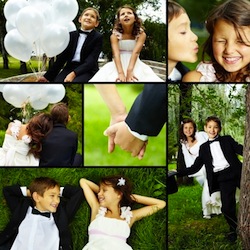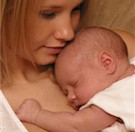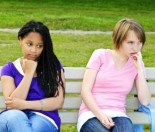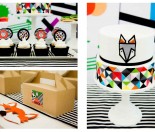The word “ceremony” may conjure in the mind an image of the pageantry of a royal wedding with all its formality, expense and protocol. However one of New Zealand’s best-kept secrets is that we lead the world in creative approaches to contemporary ceremony. And families are where most of our key rituals and ceremonies occur. Here are some great ideas for including children in family celebrations and ceremonies.
Ever since we abandoned the notion that “children should be seen and not heard”, our young people have contributed to the richness of family celebrations of all sorts.
Weddings
Let’s begin with weddings, since they are often top-of-mind when we think ceremony. In New Zealand there are a relatively few must-haves for a marriage ceremony to be legal. Your celebrant guides you through these. Involving children appropriately in the wedding ceremony is not only a delight, but it could be argued, is an essential when families are being blended or it is their parents’ wedding.
- Older children can be groomsmen and bridesmaids, although long-time friends also like to be included in this tradition. Younger children are often chosen as flower girls, page boys and ring bearers, and can steal the show providing they have been included in the rehearsal and are prepared for the sea of faces that will greet them on the big day.
- Children who are old enough to understand the legality of the marriage contract (and could testify in court in the unlikely event of this being necessary) can be witnesses and sign the wedding papers.
- Children can also play a special role in the recessional, by being positioned along the sides of the aisle with bottles of wedding bubbles (these are best in narrow-necked bottles to limit spillage and do not stain clothing) to blow as the newly-weds pass – always a great photo opportunity!
- A popular tradition is to have a small girl give the bride a horseshoe as a symbol of good luck. In days gone by, apparently the back left shoe of a grey horse brought the greatest luck, but these days, lace versions are more readily available. It is essential to advise the celebrant in advance, even if it is to be a surprise for the bride. If the celebrant isn’t forewarned, one small girl may be left clutching her gift or awkwardly running after the bridal couple at the end, which is a shame when it could have been a moment of magic within the ceremony.
Birthdays
Birthdays offer the opportunity to reinforce simple family traditions. Children enjoy making cards, decorating cakes and staging small performances for others’ birthdays – the magic show was a favourite for a few years in our house. My children are now teens, but they still enjoy the tradition of a family dinner with the wider family, even if they have a separate birthday celebration with their friends. They choose the menu, get to sit on a special chair and, of course, blow out the candles. These small rituals build memorable family traditions over the years.
But milestone birthdays such as turning 1, 5, each 7-year cycle, double-digits, entering and leaving teenage-hood, 21, decade birthdays thereafter, and any other year of particular note, warrant a special focus. I’ve designed ceremonies for all these occasions both within and beyond my family.
They may forget what you said, but they will never forget how you made them feel. Kind words can be short and easy to speak, but their echoes are endless. Mother Teresa
For adult decade birthdays, a celebrant contributes a different dimension that many people don’t recognise until they see it happen. The celebrant creates a space that enables friends and family to affirm the person celebrating. The experience is permission-giving in a culture that often shies away from saying (and hearing) the ‘good stuff’. I treasure a particular inscription by my then 9 year old son on an art canvas used in my decade birthday celebration. It publicly thanked me for doing his homework for him, an activity I hotly deny to this day, but it’s a great reflection of his view on life at the time. Having a time set aside within a birthday party for a ‘ceremonial focus’ like this, not only genuinely honours the person celebrating, but facilitates sharing the values and attributes that we hold dear. It’s fun and life-enhancing at the same time.
Transitions
Children also need to be part of transitions, such as moving house. Most measurements of stress indicate moving house is right up near the top of the scale for adults, but the effect on children can be overlooked.
- A final photograph , as well as one on arrival at the new home, can be a lasting memento, even when the subjects look exhausted.
- Each family member might choose something from the garden as a symbol of their time in their old house eg leaves (which can be dried), bulbs, pebbles, shrubs or garden ornaments. These symbols can be relocated to the new home and, once you are settled, can be incorporated in a welcome or house blessing ceremony.
- Children can be involved by sprinkling water for cleansing, smudging with dried herbs, candle lighting etc and the family can all share their wishes for the future. You can craft your own ceremony, of course, but using a celebrant enables all family members to participate without having to be responsible for holding the space.
More and more, parents want to include their children in celebrations and ceremonies and one of the pleasures of working as a celebrant is walking alongside a family at all their important life stages. Rather than thinking of ceremony as a big, formal pageant, consider it a pause in the hurly-burly of daily life to focus on what matters – it often evokes laughter and tears, involves fun and creativity, but most of all, it’s about being real and all family members have a part to play.
Useful links
The Celebrants Association of New Zealand has a directory of celebrants in New Zealand
Some more ideas for involving children in wedding ceremonies






